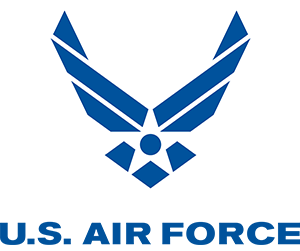Frequently Asked Questions (FAQ)
There's a lot to learn when it comes to joining the Military, from the first meeting with a recruiter to finding a career and taking advantage of benefits. On our FAQ page, we’ve collected the most common questions young adults and parents have about service.
If you don’t see your specific question answered here, feel free to reach out to a recruiter directly, as they are the best source for the most up-to-date program information.
WAYS TO SERVE
What is the difference between officers and enlisted service members?
Officers are the managers of the Military, acting in leadership roles that require planning, directing operations and making critical decisions. Almost all officer positions require a four-year degree or equivalent education.
Enlisted service members perform many jobs in the Military. While these occupations mostly involve hands-on training for mechanical, transportation, human service or office fields that transfer well to the civilian world, they also include infantry roles. A high school diploma is required to become an enlisted service member in the Military.
LEARN MORE ABOUT ENLISTED AND OFFICER PATHS
How do I become an officer?
There are many paths you can take to become an officer in the Military. This includes attending Military Academies, joining the Reserve Officer Training Corps (ROTC), directly commissioning, and more.
LEARN MORE ABOUT BECOMING AN OFFICER
What does "part-time duty" mean?
Part-time duty is service in the Reserve and/or National Guard. Service members in these “components” typically participate in military training one weekend per month and also one 2-week session per year while also pursuing their own careers or education.
With the exception of Space Force, all service branches offer part-time opportunities.
What's the difference between the National Guard and the Reserve?
Both Reserve and National Guard units can be activated specifically for military missions, including missions abroad, and they may serve side-by-side with active-duty service members.
Members of the National Guard, however, can be called for duty by either their state governors or by the president. National Guard members can receive educational benefits that may vary from state to state, in addition to the Post-9/11 GI Bill. It's important to understand that the National Guard is considered an extension of the Reserve component.
The Army and the Air Force both offer National Guard options. All service branches, except the Space Force, also offer reserve components.
EXPLORE FULL AND PART-TIME OPTIONS
How long are people who enter the Military obligated to serve?
The length of commitment depends greatly on the chosen Service, required training and a number of other variables. For instance, in the Marine Corps, members are obligated to a term of 8 years total, with 4 or 5 of those being on active duty (depending on enlistment program choice) and 3 in the Inactive Ready Reserve (IRR) for active duty enlistments.
Reserve enlistments typically service between 4 and 6 years as a drilling reservist in the Selected Marine Corps Reserve (SMCR) with the remainder being in the IRR. For the Navy, current enlistments obligation ranges from 3-6 years active service. Military personnel may retire after 20 years of service and must retire after 30 years of service in most cases.
How long is an average term of service?
While total length of service commitment varies based on Service branch need and occupational specialty, a first term is generally four years of active duty followed by four years in a Reserve unit or Individual Ready Reserve (IRR). IRR members do not drill, but muster once per year. IRR members are also not paid but may be recalled to Active Duty in times of need until their eight-year total commitment has expired.
Are there shorter enlistment commitments available?
Though technically not a "shorter" commitment, the two-year enlistment program is available for some Services. A recruiter can tell you more about this option.
When were the service branches first established?
The six service branches of the U.S. Military were established throughout different times in our nation’s history:
- Army – June 14th, 1775
- Navy – October 13, 1775
- Marine Corps – November 10, 1775
- Coast Guard – August 4, 1790
- Air Force – September 18, 1947
- Space Force – December 20, 2019
Visit Service Branches to learn more about each.
What is military rank?
The enlisted and officer paths each have a unique hierarchy of various ranks. Although ranks may differ between service branches, they all indicate a service member’s level of responsibility, leadership and seniority.
Learn more at Enlisted and Officer Paths.
Who is in charge of the Military?
As the Commander in Chief, the President of the United States is responsible for all command decisions. The president is advised by the Secretary of War, who oversees the Department of War and works closely with chiefs of staff from every service branch.
Although the Coast Guard ultimately reports to the commander-in-chief as well, it operates within the Department of Homeland Security.
What is Selective Service?
The Selective Service System is a government agency that requires the registration of almost all male US citizens and male immigrants who are 18 through 25. Should a national emergency require a military conscription (draft), these individuals may be called upon to serve. It’s important to know that even though he is registered, a man will not automatically be inducted into the military.
Learn more at SSS.gov.
JOINING AND ELIGIBILITY
What is MEPS?
Military Entrance Processing Stations (MEPS) are locations run by United States Military Entrance Processing Command (USMEPCOM), a joint Service organization, that determines an applicant's physical qualifications, aptitude and moral standards as set by each branch of military service. Visiting MEPS is an important step in becoming an enlisted service member.
MEPS Myths
Staff members and applicants speak to the realities of a day at MEPS and what you can really expect from the entire process.
Length 1:50 View TranscriptTranscription
Walking through the MEPs doors making the decision to enlist is a huge life-changing opportunity and decision we recognize that and so we want to be there to greet you and guide you and make you feel comfortable by answering any questions you have.
There's not much that's unexpected from MEPS. When you get here everything's explained to you they tell you exactly what to do exactly where to go.
Most kids have a misconception that it's going to be all yelling and screaming and it's going to be nothing but pain and heartache but in actuality it's more like a day at the doctor's.
An applicant can and sometimes does unfortunately fail the initial medical examination.
As liaison we're here to navigate that path for applicants. There are waivers in place that we can grant based on you as an individual and your character and the circumstances.
The testing is not just your overall score that we look at. So taking your test scores and what you want to do we kind of find the best job that fits you if you have no idea what you want to do. We deal with that all the time too because we go through every job you're qualified for and what sounds interesting to you.
You just go do the ASVAB test and based on your score you get a job.
There's a lot that we are doing to support you but in the end I hope you feel confident and that you feel you're going to be successful because that's what us as liaison want for you as well.
MEPS Myths
What is the ASVAB?
The ASVAB test, or Armed Services Vocational Aptitude Battery, is a multiple-choice exam that helps determine the military careers for which an individual is best suited. There are two versions of the test:
- The enlistment version of the ASVAB is given at a Military Entrance Processing Station (MEPS) and is used for recruiting purposes only.
- The student testing program, also known as the ASVAB Career Exploration Program (CEP), is used for career exploration and is given in high schools and community colleges, at job corps centers and at correctional facilities.
What is ROTC?
1. What is ROTC?
ROTC is a leadership training and development program that prepares full-time, college-enrolled students for service opportunities in the Army, Marine Corps, Navy, Air Force and Space Force. The program provides scholarships and/or tuition assistance to support professional skills training. Upon completion, graduates are commissioned as military officers. Today ROTC is offered at more than 1,700 colleges and universities.
2. Does ROTC mean you are in the Military?
Participating in ROTC does not count toward military service, but by accepting an ROTC scholarship, you are committing to a period of service in the Military after completion of the program. That said, the first two years of an ROTC program do count as a college elective.
3. Can only scholarship winners join ROTC?
Students can enroll in an ROTC program whether they receive an ROTC scholarship or not. Regardless of scholarship status, all ROTC books, supplies and equipment are provided at no cost.
4. Does ROTC pay for college?
ROTC scholarship recipients receive full or partial tuition scholarships, which include money for books each year, college or university fees, a monthly stipend while attending college, and room and board. Non-scholarship participants will receive an ROTC stipend during their junior and senior years once contracted into the Military.
What happens during basic training?
Basic training, which is commonly known as boot camp, is a 7.5-to-13 week training program that prepares recruits for all elements of service: physical, mental and emotional. It also instills service members with discipline, confidence, and reinforces the importance of teamwork.
Do you need a high school diploma to join the Military?
Possession of a high school diploma is desirable, although not mandatory, for enlistment in any component of the Military Services. Depending on Service needs, candidates with a GED (General Education Development) certificate may be able to join, however; these opportunities may be limited.
What are the requirements for joining the Military?
Requirements vary by Service, but generally speaking, candidates must meet certain criteria for:
- Age
- Physical ability
- Education
- Citizenship
For details, see Eligibility Requirements.
Why do candidates need to speak to recruiters, and what should they ask?
Recruiters are the very best source of information about what the Military is like, what young people can get from the Service and all the steps in the process of recruiting. It matters that people get accurate and current information, and recruiters are the best resource for answers to even the most difficult questions regarding the Service.
To get started, visit Questions to Ask a Recruiter.
Can certain health problems prevent a candidate from serving?
Yes. As part of the entrance process for any Service branch, but prior to boot camp, new recruits will receive a physical exam, which includes a complete medical history. During that exam, they will be asked about their overall health. A recruit's input and the result of the exam will determine his or her ability to meet the health and physical fitness standards for military service.
Some of the most common reasons for disqualification include permanent medical conditions such as sight or hearing deficiencies, or temporary conditions that can be remediated, such as excess body weight. Applicants who are disqualified because of a temporary condition may be granted a medical waiver, with the approval rate depending on the condition being considered and the different needs of each Service. For a full list of conditions and waiver considerations, we recommend that you speak with a recruiter.
Can foreign-born American citizens join the Military?
Yes. U.S. Citizens or Legal Permanent Residents (people who have valid alien registration form, I-551 or green card, from the US Immigration and Citizenship services) may join the U.S. Military.
Can people join the U.S. Military if they are not American citizens?
Properly documented noncitizens may enlist. However, opportunities may be limited. Contact a recruiter for more advice on a specific situation.
For enlistment purposes, the United States includes Guam, Puerto Rico, the U.S. Virgin Islands, the Northern Mariana Islands, American Samoa, the Federated States of Micronesia, the Marshall Islands and Palau.
Are there special considerations for women enlisting in the Military?
All jobs, including combat, are open to women. The percentage of women serving on active duty in the Military has more than doubled since 1978. Clearly, women play an important role in today's Military. Each Service and many occupations have specific physical requirements that must be met regardless of sex.
Does having a criminal record disqualify a potential recruit from military service?
Each Service branch takes a different approach to evaluating the severity and number of offenses on a candidate’s record. Generally, felons or individuals with multiple convictions cannot join, but in certain cases a Service branch may grant moral conduct waivers or felony waivers. You can explore current Service branch-specific requirements at the Army, Marine Corps, Navy, Air Force and Coast Guard. If you have any concerns about your record, please contact your recruiter.
If a candidate has children (dependents), can he or she enlist?
DoW generally prohibits the enlistment of any applicant who has more than two dependents under the age of 18. While the Services are allowed to waive this policy, they often will not. In fact, most of the Services are even stricter in their policies:
- Army: Allows married applicants to have two dependents (or more with a waiver)
- Marine Corps: Waiver for any dependents is required; eligibility for waiver is based on applicant's relationship to the dependent (married, unmarried, separated, divorced, etc.)
- Navy: May require a waiver for applicants with dependents, and each case is reviewed independently to determine eligibility
- Air Force: Allows married applicants to have two dependents (or three with a waiver); single applicants require a waiver for up to three dependents; no waivers granted for anyone with four or more dependents
- Coast Guard: Allows no more than three dependents
Once serving, all service members are free to marry and have children as they wish. Family members are eligible for military health care, and female service members can take maternity leave. Speak to a recruiter to learn more about this process.
How many people join the Military every year?
203,045 individuals joined the Military in the fiscal year of 2023. Below is a breakdown by Service branch and component:
Active Duty
- Army: 50,181
- Navy: 30,236
- Marine Corps: 28,921
- Air Force: 24,100
- Space Force: 537
- Coast Guard: 5,485
Part-time / Reserve
- Army National Guard: 29,310
- Army Reserve: 9,319
- Navy Reserve: 6,342
- Marine Corps Reserve: 2,627
- Air National Guard: 7,120
- Air Force Reserve: 7,765
- Coast Guard Reserve: 6,185
CAREERS AND BENEFITS
What jobs are available in the Military?
Much like the wide range of jobs found in the civilian working world, the Military offers hundreds of rewarding opportunities across many different career fields. Visit Explore Careers to discover opportunities that match your interests and skill sets.
To hear from service members about their own career experiences in the Military, visit Career Stories.
How do candidates find the career that they are interested in?
First, candidates need to confirm the career field or military occupational specialty (MOS) they want are available by working with the service enlistment counselor at a Military Entrance Processing Station (MEPS). Thousands of different jobs are available, but not in each Service. Jobs are assigned based on several factors:
- Current and anticipated military needs
- Individual career aspirations
- Individual skills and qualifications
- Results from the Armed Services Vocational Aptitude Battery test (ASVAB)
Potential recruits and parents should review the job categories in the careers section of this site and then discuss possible career paths with a recruiter.
Is it possible to switch jobs once in the Military?
The short answer is “yes.” However, many military jobs come with time commitments, so a service member might be obligated to remain in a specific career for the length of his or her contract. It is best to ask a recruiter for specifics, or, if already serving, to speak with the command career counselor.
What is pay like for military jobs?
Base Pay at each rank is the same across all Services, but many factors, including Special Pays, affect what a service member will actually earn.
How are service members prepared for success upon leaving the military?
For many service members, the Military serves as a foundation of skills and experience that translate into civilian careers. In addition to government programs that provide transition assistance, many organizations also provide employment resources and opportunities for those who are returning to civilian life.
How often do service members get raises?
Service members usually receive a modest pay raise annually, to keep pace with the cost of living. In addition, raises are received when service members are promoted to the next pay grade. (This is generally associated with a new rank or the amount of time an individual has served.) Time between promotions varies based on service member performance.
How can a young person learn what job might be good for him or her?
The ASVAB test helps young people identify the things they're good at, areas of interest and potential job matches.
EDUCATION AND TRAINING
What kind of training do service members receive?
All recruits begin by undergoing their Service branch’s version of Basic Training, commonly known as boot camp. While boot camp varies in duration from Service to Service, the focus is the same: preparing recruits physically, mentally and emotionally for their future in the Military.
Following Basic Training, service members receive advanced training in their specialty. A variety of training methods are used, including classroom instruction, field exercises and simulations. Ongoing training is also available in most specialties to keep service members’ skills sharp.
Can service members attend college and earn a degree?
Yes. All Service branches offer the opportunity for higher education, both during and after service. Many military training programs count toward course credit, while some branches offer classes on base or online (the Air Force, for instance, has its own community college). All service members are eligible for tuition support through the Post-9/11 GI Bill and other tuition repayment programs.
High school students interested in officer careers may wish to enroll in a Reserve Officer Training Corps (ROTC) program at the college of their choice. In exchange for a service commitment, ROTC provides college scholarships and leadership training.
Service academies offer another opportunity for young adults. These academies provide a strong college education with the discipline of officer training.
Will the Military pay for college?
The Military offers many educational benefits that service members can take advantage of during or after service.
LIFE IN THE MILITARY
What is it like to live and work in the Military?
As in the civilian world, military life varies depending on a service member’s job, attitude and desire. Once work or training is done for the day, however, a service member can do as he or she pleases. Visit Life in the Military for more information on free time, family support and military perks
What are the benefits of life in the Military?
- Opportunities for personal growth, including developing confidence, leadership, and motivation.
- A wide range of careers that align with many personal interests. These roles often include advanced training that helps develop skills which are transferable to employment after the military.
- Employment benefits, like health care, retirement savings, paid vacation, life insurance, and more.
- Off-duty entertainment, rest and relaxation activities, and other family & community offerings
- Competitive salary and compensation that often includes housing allowances, and other additional pay
- Discounts and perks on things like everyday shopping and vacation/leisure opportunities
- A chance to see the world
Where are new service members stationed?
With installations all over the globe, it is impossible to predict in advance where a service member could be stationed. Following basic training, service members are given assignments based on Service needs, and their skills and training. As such, there are no guarantees a member will serve close to home.
However, service members generally know well in advance where they’ll be going, and deployment does not automatically mean going to war. They may also be deployed for support in noncombat areas or deployed domestically to help with disaster relief.
Where do service members live?
Military housing varies by rank, location and family situation. New recruits typically start their military careers living on base. Here they have access to a supportive community filled with amenities and comforts of home. Service members who qualify to live off base are given a Basic Allowance for Housing (BAH) as part of their compensation.
How much vacation and leisure time do service members receive?
Active-duty service members receive 30 paid vacation days each year as an employment benefit. On top of this, the Military provides a wide range of recreational activities for service members and their families to enjoy on a daily basis.
What happens to my job if I am in the Reserve or Guard and I get deployed?
Your job will be protected under the Uniformed Services Employment and Reemployment Rights Act (USERRA). When your deployment is finished, you will be able to return. Some employers are also known for having military-friendly policies.
Are new recruits shipped off right away?
Following boot camp, most Service branches allow new service members a short break to spend time at home. After that, service members generally spend another six months to a year in advanced training for their occupational specialty before deploying overseas or stateside.
FOR PARENTS
What are the benefits of joining the Military?
- Opportunities for personal growth, including developing confidence, leadership, and motivation.
- A wide range of careers that align with many personal interests. These roles often include advanced training that helps develop skills which are transferable to employment after the military.
- Employment benefits, like health care, retirement savings, paid vacation, life insurance, and more.
- Off-duty entertainment, rest and relaxation activities, and other family & community offerings
- Competitive salary and compensation that often includes housing allowances, and other additional pay
- Discounts and perks on things like everyday shopping and vacation/leisure opportunities
- A chance to see the world
How can parents of service members find support?
There are many ways that parents of service members can find support that they need. These include listening to stories from other military parents, joining well-known parent-to-parent networks, and also exploring parental resources provided by the Services.
How often do service members see their families?
All active-duty Service branches offer 30 days of paid vacation per year during which service members may spend time with their families or plan other Rest and Relaxation (R&R). Options like Space-Available Travel allow troops to fly at no cost on regularly scheduled military flights, provided there is a seat available. This is a great, inexpensive way to get to a destination. Family members are also welcome to visit their service member on base. In addition, service members of the Reserve and National Guard are often allowed to serve close to home.
How do service members stay in touch?
Even while deployed, service members will usually have access to postal mail, email and phone service (even while at sea). While communication may be restricted during certain missions, modern technology makes it relatively easy for families to keep in touch.
If there is a family emergency and you need to reach a relative in service, you should contact the American Red Cross Hero Care Center, which can relay messages to U.S. military personnel worldwide.
At what age can a young adult join with parental consent?
Military and service academy minimum entrance age requirements are 17 with parental consent or 18 without parental consent. Visit Eligibility Requirements to learn more.
Visit What To Expect to learn more about what you and your child might experience if he or she decides to join the Military.










